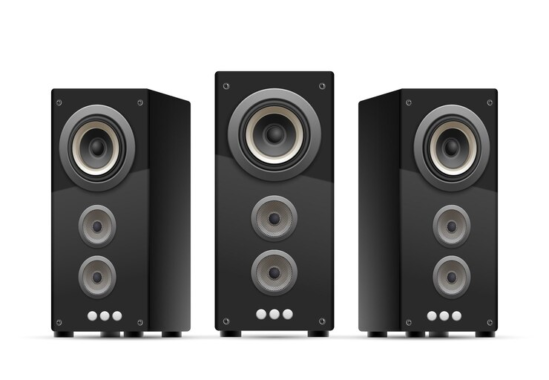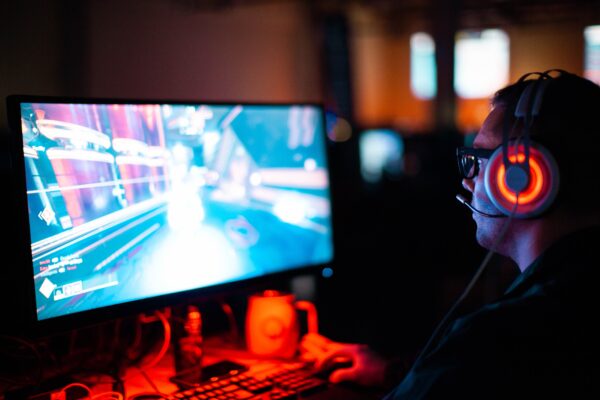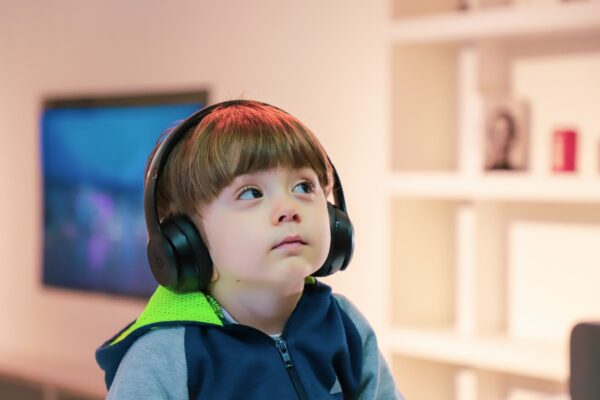Connecting bookshelf speakers to your TV can be a game-changer for your viewing experience. With the right set of speakers, you can enjoy your favorite movies and TV shows with high-quality sound that immerses you in the action. However, the process of connecting bookshelf speakers to a TV can be daunting, especially if you’re not familiar with the various options available.
To help you out, this article explores the different ways you can connect bookshelf speakers to your TV. It starts by discussing your TV’s audio output options, including HDMI, optical, and RCA. Then, it goes on to explain the various wired and wireless connections you can use to connect your speakers to your TV. Finally, it covers some common issues you may encounter and how to troubleshoot them.
Understanding Your TV’s Audio Output Options
When it comes to connecting bookshelf speakers to your TV, it’s essential to know the audio output options available on your TV. This section covers how to identify audio outputs on your TV and the types of audio cables and connectors you’ll need to connect your bookshelf speakers.
Identifying Audio Outputs on Your TV
Before connecting your bookshelf speakers to your TV, you need to identify the audio output ports on your TV. Standard audio output ports include HDMI ARC, optical (TOSLINK), 3.5mm headphone jacks, RCA outputs, or Bluetooth connectivity.
To identify the audio output ports on your TV, consult your TV’s user manual or look for the audio output ports on the back or side of your TV. Once you’ve identified the audio output ports on your TV, you can determine which type of audio cable or connector you’ll need to connect your bookshelf speakers.
Types of Audio Cables and Connectors
The type of audio cable or connector you’ll need to connect your bookshelf speakers to your TV will depend on the type of audio output port on your TV. Here are some common types of audio cables and connectors you may need:
1. HDMI ARC
If your TV has an HDMI ARC port, you can use an HDMI cable to connect your bookshelf speakers to your TV. HDMI ARC allows for high-quality audio transmission and also enables you to control your bookshelf speakers with your TV remote.
2. Optical (TOSLINK)
If your TV has an optical (TOSLINK) port, you can use an optical cable to connect your bookshelf speakers to your TV. Optical cables allow for high-quality audio transmission and are ideal for home theater setups.
3. 3.5mm headphone jack
If your TV has a 3.5mm headphone jack, you can use a 3.5 mm-to-RCA cable to connect your bookshelf speakers to your TV. This type of cable is ideal for smaller setups or if you’re on a budget.
4. RCA outputs:
If your TV has RCA outputs, you can use an RCA cable to connect your bookshelf speakers to your TV. This type of cable is ideal for older TV models or if you’re on a budget.
4. Bluetooth
If your bookshelf speakers have Bluetooth connectivity, you can connect them to your TV wirelessly. To do this, enable Bluetooth on your TV and pair your bookshelf speakers with your TV.
In conclusion, understanding your TV’s audio output options is essential when connecting bookshelf speakers to your TV. Identify the audio output ports on your TV and determine which type of audio cable or connector you’ll need to connect your bookshelf speakers. With this knowledge, you can enjoy high-quality audio from your bookshelf speakers while watching your favorite shows or movies.
How to Connect Bookshelf Speakers to TV with HDMI
Connecting bookshelf speakers to a TV using HDMI is a simple process that can be accomplished in a few easy steps. HDMI is a digital interface that can transmit both audio and video signals, making it an ideal choice for connecting bookshelf speakers to a TV. Wondering how to connect bookshelf speakers to TV with HDMI? The answer lies in these simple yet effective steps, ensuring an elevated and immersive entertainment setup.
Check for HDMI ports
Check both your TV and bookshelf speakers for HDMI ports. Most modern TVs and bookshelf speakers come with HDMI ports. Make sure that your bookshelf speakers have an HDMI input.
Connect the HDMI cable
Connect one end of the HDMI cable to your TV’s HDMI output port, which is usually labeled “HDMI Out” or “ARC” (Audio Return Channel). Connect the other end of the HDMI cable to your bookshelf speakers’ HDMI input port, which is usually labeled “HDMI In” or “ARC”.
Turn on your TV and bookshelf speakers
Make sure that your bookshelf speakers are set to the correct input source.
Configure your TV’s audio settings
Most modern TVs have an option to select the audio output source. Make sure that you select the HDMI output as the audio source.
Adjust the volume level
You can use the volume control on your bookshelf speakers or your TV remote to adjust the volume level.
It’s important to note that not all bookshelf speakers come with an HDMI input. In this case, an HDMI audio extractor can be used to connect your bookshelf speakers to your TV. An HDMI audio extractor is a device that can extract the audio signal from an HDMI source and output it to a separate audio device, such as a bookshelf speaker. It’s important to get a high-quality HDMI audio extractor to ensure the best audio quality.
In conclusion, the answer to how to connect bookshelf speakers to TV with HDMI is a straightforward process that can significantly enhance your TV audio experience. By following the steps outlined above, you can enjoy high-quality sound while watching your favorite movies and TV shows.
How to Connect Bookshelf Speakers to TV Without ARC?
Connecting bookshelf speakers to your TV without ARC (Audio Return Channel) can be done using alternative methods. If your TV lacks ARC capability, you can use an optical cable or RCA cable to establish the connection between the speakers and the TV. Here’s a step-by-step guide on how to connect bookshelf speakers to TV without ARC:
Step 1: Ensure you have the appropriate cables for the connection
For this setup, you can use either an optical cable or an RCA cable. Make sure the length of the cables is sufficient for your specific TV and speaker placement.
Step 2: Locate the audio output on your TV
If you’re using an optical cable, find the optical audio output. For RCA cables, look for the RCA audio output. On the bookshelf speakers, identify the corresponding input ports.
Step 3: Turn off both your TV and bookshelf speakers
This prevents any potential electrical issues when making connections.
Step 4: End into the optical output on your TV
If you’re using an optical cable, plug one end into the optical output on your TV and the other end into the optical input on your bookshelf speakers.
Step 5: Connect the Red and White Plug
For RCA cables, connect the red and white plugs to the corresponding audio output on your TV. Then, connect the other ends to the matching input ports on your bookshelf speakers.
By following these steps on how to connect bookshelf speakers to a TV without ARC, you can successfully establish a connection between your TV and bookshelf speakers. This setup allows you to enjoy enhanced audio quality for your entertainment, bringing a richer sound experience to your favorite shows, movies, and music.
Wired Connections to TV
If you prefer a wired connection between your bookshelf speakers and your TV, you might be contemplating how to connect wired speakers to TV. In such scenarios, there are two main options: using speaker wire or connecting speakers using a 3.5mm jack.
Using Speaker Wire for Connection
To connect your bookshelf speakers to your TV using a speaker wire, you will need to ensure that your TV has a speaker output. This output is usually labeled as “Audio Out” or “Speaker Out” and is available on most modern TVs. Once you have located the output, you will need to connect the speaker wire to the TV and the speakers.
To connect the speaker wire to the TV, strip the ends of the wire and insert them into the appropriate terminals on the TV. The terminals are usually color-coded, with red indicating the positive terminal and black indicating the negative terminal. Once you have inserted the wire into the terminals, tighten the screws to secure the connection.
Next, connect the other end of the speaker wire to your bookshelf speakers. To do this, locate the speaker terminals on the back of the speakers. Again, the terminals are usually color-coded, with red indicating the positive terminal and black indicating the negative terminal. Insert the wire into the appropriate terminals and tighten the screws to secure the connection. This guide effortlessly answers the question of how to connect wired speakers to TV? for an optimized audio experience.
Connecting Speakers Using a 3.5mm Jack
Another option for connecting your bookshelf speakers to your TV is to use a 3.5mm jack. To do this, locate the audio output on your TV. This is usually a 3.5mm headphone jack or an RCA output. Once you have located the output, connect a 3.5mm jack or RCA cable to the output and the bookshelf speakers.
To connect the 3.5mm jack or RCA cable to the TV, simply insert one end into the audio output and the other end into the bookshelf speakers. Make sure that the connections are secure and tight.
It is important to note that not all TVs have a 3.5mm jack or RCA output. If your TV does not have these outputs, you will need to use an external amplifier or receiver to connect your bookshelf speakers.
By following these steps, you won’t have to wonder again about how to connect wired speakers to TV; you can easily connect your bookshelf speakers to your TV using a wired connection.
Wireless Connections to TV
Wireless connections to your TV can be a great way to keep your entertainment area clean and clutter-free. One popular wireless option is Bluetooth. If your bookshelf speakers have Bluetooth connectivity, you can easily connect them to your TV.
To connect bookshelf speakers to your TV via Bluetooth, follow these simple steps:
- Turn on your bookshelf speakers and make sure pairing is enabled.
- Go to the Bluetooth settings on your TV and select your speakers from the list of available devices.
- You can adjust the volume once your speakers are connected and enjoy your favorite shows and movies.
It is important to note that not all TVs have Bluetooth connectivity, so make sure to check your TV’s manual before attempting to connect your speakers wirelessly. Additionally, some bookshelf speakers require a separate Bluetooth adapter to enable wireless connectivity, so be sure to check your speaker’s manual as well.
Another option for wireless connectivity is Wi-Fi. Some bookshelf speakers have built-in Wi-Fi, allowing you to connect them to your home network and stream audio from your TV. This option may require additional setup and configuration, but it can provide better sound quality and more reliable connectivity than Bluetooth.
When connecting bookshelf speakers to your TV wirelessly, it is essential to follow the instructions carefully to ensure a seamless and enjoyable audio experience. Whether you choose Bluetooth or Wi-Fi, wireless connections to your TV can be a convenient and effective way to connect your bookshelf speakers.
Connecting Without a Receiver
There are several ways to connect bookshelf speakers to a TV without a receiver. This section will cover three methods: using the TV’s audio output, using a soundbar, and using a Bluetooth transmitter.
Using the TV’s Audio Output
One of the easiest ways to connect bookshelf speakers to a TV without a receiver is to use the TV’s audio output. Most modern TVs have either an optical or a 3.5mm audio output. To connect your speakers, follow these steps:
- Locate the audio output on your TV. It’s usually labeled “Audio Out,” “Optical Out,” or “Headphone Jack.”
- Connect one end of an optical or 3.5mm audio cable to the TV’s audio output and the other end to your bookshelf speakers.
- Turn on your TV and speakers, and set the volume to a comfortable level.
Using a Soundbar
Another option is to use a soundbar. A soundbar is a long, slim speaker that can be placed beneath your TV. Many soundbars come with built-in amplifiers and can be connected directly to your TV. To connect your soundbar, follow these steps:
- Locate the audio output on your TV. It’s usually labeled “Audio Out,” “Optical Out,” or “Headphone Jack.”
- Connect one end of an optical or 3.5mm audio cable to the TV’s audio output and the other end to your soundbar.
- Turn on your TV and soundbar and set the volume to a comfortable level.
Using a Bluetooth Transmitter
If your bookshelf speakers have Bluetooth connectivity, you can connect them to your TV using a Bluetooth transmitter. A Bluetooth transmitter is a small device that plugs into your TV’s audio output and transmits the audio signal to your speakers. To connect your speakers, follow these steps:
- Plug the Bluetooth transmitter into your TV’s audio output.
- Turn on your Bluetooth transmitter and put it into pairing mode.
- Put your bookshelf speakers into pairing mode.
- Once the two devices are paired, you should be able to hear the audio from your TV through your bookshelf speakers.
How to Connect Speaker to Smart TV?
Many users today own smart TVs and may be curious about how to connect speaker to smart TV for an enhanced audio experience. Connecting bookshelf speakers to a smart TV follows similar principles to traditional TVs. Begin by identifying the audio output options on your smart TV, such as HDMI, optical, or 3.5mm headphone jacks. Utilize the appropriate cables or connectors to link your speakers to the TV.
How to Connect Smart TV to Speaker Using Jack?
Connecting your smart TV to your bookshelf speakers using a jack involves an easy process. to find out how to how to connect smart TV to speaker using jack follow this step-by-step process:
Identify the Audio Output on Your Smart TV
Locate the audio output ports on your smart TV. Common options include a 3.5mm headphone jack or RCA outputs. Refer to your TV’s manual if needed.
Check the Type of Jack on Your Bookshelf Speakers
Verify the input options on your bookshelf speakers. They may have a 3.5mm jack or RCA inputs. Ensure compatibility between the TV output and speaker input.
Get the right cable
Depending on the ports, obtain the appropriate cable. For a 3.5mm jack, you’ll need a 3.5 mm-to-3.5 mm cable. For RCA connections, use an RCA cable.
Power Off TV and Speakers
Turn off both your smart TV and bookshelf speakers before making any connections.
Connect the Cable
Insert one end of the cable into the audio output on your TV. If using RCA, match the colors (red to red, white to white). Connect the other end to the corresponding input on your bookshelf speakers.
Power on TV and Speakers
After making the connections, power on your smart TV and bookshelf speakers.
Configure TV Audio Settings
Access your TV’s settings menu and navigate to the audio settings. Choose the output as external speakers or the connected jack.
Test the connection
Play some audio or video on your smart TV to test whether the sound is coming through the bookshelf speakers. Adjust volume levels accordingly.
Fine-Tune Audio Preferences
Explore your TV’s audio settings to adjust bass, treble, and other preferences to optimize the audio output.
Troubleshooting Common Issues
If you encounter problems when connecting your bookshelf speakers to your TV, don’t worry. Here are some common issues and how to troubleshoot them.
When TV Doesn’t Recognize Speakers
If your TV doesn’t recognize your bookshelf speakers, there are a few things you can try:
- Check the connections: Ensure that your speakers are properly connected to your TV. Make sure the cables are securely plugged in.
- Check the settings: Go to your TV’s audio settings and ensure that the output is set to external speakers. If you have a receiver, make sure it’s set to the correct input.
- Check the power: Ensure that your speakers are turned on and the volume is turned up.
Adjusting TV Settings for External Speakers
If your TV recognizes your speakers but you’re not getting any sound, try adjusting the settings:
- Check the volume: Ensure that the volume on your speakers is turned up. You can also adjust the volume on your TV.
- Check the audio format: Some TVs only support certain audio formats. Check your TV’s manual to see which formats are supported.
- Check the equalizer: If your TV has an equalizer, try adjusting it to see if it improves the sound quality.
- Check the audio delay: If the audio is out of sync with the video, you may need to adjust the audio delay. Check your TV’s manual to see how to do this.
By following these troubleshooting tips, you can connect your bookshelf speakers to your TV without any problems. If you’re still having issues, consult the manual for your TV and speakers or contact the manufacturer for further assistance.
Connecting Legacy Speakers to Modern TVs
If you have a set of older speakers that you would like to connect to your modern TV, there are a few things to consider. The first step is to determine what type of connection your speakers use. If your speakers have a 3.5mm or RCA input, you can use a simple adapter to connect them to your TV. If your speakers are wireless, you can connect them to your TV using Bluetooth. However, if your speakers do not have any of these options, you may need to purchase a separate amplifier or receiver to connect them to your TV.
Connecting with 3.5mm or RCA Cable
If your speakers have a 3.5mm or RCA input, you can connect them to your TV using a cable. Plug one end of the cable into the headphone jack on your TV and the other end into the input on your speakers. Make sure that the volume on your TV is turned down before connecting the cable to avoid any damage to your speakers.
Connecting with Bluetooth
If your speakers are wireless, you can connect them to your TV using Bluetooth. To do this, go to the Bluetooth settings on your TV and select your speakers from the list of available devices. Make sure that your speakers are in pairing mode before attempting to connect them to your TV.
Using an Amplifier or Receiver
If your speakers do not have a 3.5mm or RCA input, and they are not wireless, you may need to purchase a separate amplifier or receiver to connect them to your TV. Ensure the amplifier or receiver has the appropriate inputs and outputs for your speakers and your TV. You will also need to ensure that the amplifier or receiver has enough power to drive your speakers. Check the specifications of your speakers to determine how much power they require.
In summary, connecting legacy speakers to modern TVs is possible with the right equipment and connections. Following the steps outlined above, you can enjoy high-quality sound from your older speakers while watching your favorite shows and movies on your modern TV.
Conclusion
Connecting legacy speakers to modern TVs is a simple process that can greatly improve your audio experience. Whether using wired or wireless options, it is important to understand your TV’s audio outputs and utilize the appropriate cables. Troubleshooting common issues like connectivity problems or audio settings can ensure a seamless connection. HDMI, RCA, and Bluetooth are all viable options for connecting bookshelf speakers to your TV. With a little effort, you can enjoy your favorite shows and movies with high-quality sound from your older speakers. Overall, enhancing your TV’s sound with bookshelf speakers is a straightforward process that elevates your entertainment setup and provides a significant boost to your audio experience.
Frequently Asked Questions
Q: How to Connect Bookshelf Speakers to TV in the Most Efficient Way?
A: Connecting bookshelf speakers to a TV can enhance the audio experience of movies, music, and TV shows. The most efficient way to connect bookshelf speakers to a TV depends on the type of speakers and the connections available on your TV. Wireless bookshelf speakers can be connected to a TV using Bluetooth or Wi-Fi. If your bookshelf speakers are not wireless, you can connect them to your TV using an amplifier, an optical cable, or RCA cables.
Q: Can I Use Bookshelf Speakers for TV?
A: Absolutely! Bookshelf speakers can significantly enhance your TV audio experience. The method of connection depends on whether your speakers are wireless or not.
Q: Can I Connect Speakers Directly to My TV?
A: Yes, you can connect speakers directly to your TV. The method varies based on your speaker type and TV connections.
Q: How to Connect External Speakers to TV with HDMI?
A: Connecting external speakers to your TV with HDMI is a convenient method that ensures high-quality audio transmission.
Q: How to connect external speakers to TV without receiver?
A: The answer to how to connect external speakers to TV without receiver is simple, it can be done through the TV’s audio output. Identify the available ports on your TV, such as optical or 3.5mm jack, and use the corresponding cable to connect to your speakers. Alternatively, consider a soundbar with built-in amplifiers, connecting it to your TV through audio output ports.



